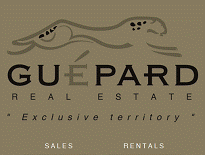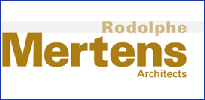Waste
Waste (Romania)
Why should we care about this issue
Waste management
Key message
Waste management
Waste management is one of the major problems Romania faces in terms of environmental protection. This refers to collection, transport, treatment, recovery and disposal of waste. The inappropriate practices of waste management inherited from the past, which are also used in Romania today, have led to a great number of non-compliant waste landfills and to an inadequate disposal of large amounts of waste that continue to be generated. On the other hand, due to the significant economic activities in the past, associated with a lack of observance of environmental laws, Romania has inherited a large number of contaminated sites, which generate high levels of emissions into the air and water, causing excessive soil and landscape degradation in numerous cases.
Starting in 2000, the implementation of the European waste management legislation has resulted in improved waste management practices. Pursuant to the requirements of the Waste Framework Directive, the Ministry of the Environment has developed and implemented the National Waste Management Strategy and the National and Regional Waste Management Plans, which are reference documents constituting the main implementation tools for European Union policies in this field.
The state and impacts
- Source Geocoverage
-
state, impacts
Key message
state, impacts
Figures
state, impacts
state, impacts
state, impacts
state, impacts
Of the total amount of waste produced in Romania, the waste generated by the extraction industry accounts for approximately 90 %, with the rest being comprised of manufacturing waste and municipal waste. As for industrial waste, a decrease has been seen lately in the amounts generated due to the fact that some of the major waste generating sectors have terminated their activity (e.g. the extraction industry) or due to changes and improvements in manufacturing technologies.
The total amount of municipal waste generated varies every year, with a slightly increasing trend being recorded in recent years, triggered by an increase in public consumption, by a rise in the amount of construction and demolition waste collected from the population by cleaning firms, as well as by the higher number of people served by public cleaning firms on a centralised basis. There is a link between the higher amount of municipal waste generated and the GDP, due to the fact that the business and construction sectors have made a large contribution to the increase in the Romanian GDP over the last years.
Landfilling is the main form of disposal of municipal waste. Over the past few years, a descending trend has been seen in collected household and similar waste, due to an increase in selective collection of recyclable waste, which is no longer included in the flow of municipal waste collected by cleaning firms and deposited in landfills. This decrease results from the implementation of EU directives on special waste flow management such as: Directive 94/62/EC on packaging and packaging waste, Directive 2002/96/EC on waste electrical and electronic equipment, etc., which provide for recovery and recycling targets.
Romanian waste laws, harmonised with the European Union legislation, have had a positive impact in the last few years, but considerable efforts are still needed to ensure compliance with EU standards.
The key drivers and pressures
- Source Geocoverage
-
municipal waste,manufacturing waste
Key message
drivers, pressures, municipal waste,manufacturing waste
Integrated waste management projects must be carried out in accordance with the National Waste Management Plan and the Regional Waste Management Plans, in order to comply with the legal requirements in the field of waste management. Investment programmes will include activities related to the waste management hierarchy, helping to minimise the impact of waste management on the environment and on human health.
Projects for the implementation of integrated municipal waste management systems, financed from European funds, are currently in various development phases. Concurrently, projects will be carried out to raise public awareness, given that implementing efficient integrated waste management systems requires not only infrastructure development, but also public involvement. A decrease in the amount of waste deposited and the protection of natural resources implies the implementation of selective waste collection systems, waste recovery and recycling.
Of the total amount of municipal waste, the largest part is household and similar waste (approximately 75 %). This results both from private households and from enterprises, businesses, offices, institutions and healthcare facilities. Organising the collection, transport and disposal of municipal waste is one of the obligations of local public administrations, through the specialised services of town halls or through cleaning firms. Not all the population has access to such services. Thus, the national coverage of public cleaning services is approximately 50 % (80 % in urban areas and 10 % in rural areas). Landfill is the main form of municipal waste management. Of the total amount of generated municipal waste, about 98-99 % is deposited every year.
Municipal waste is mostly collected in an unselective manner and it is deposited as such, mixed, thereby losing large part of its reusability (paper, glass, metals, plastics); in addition, this may cause water and soil contamination. A 2004 evaluation of waste landfills in urban areas revealed that an inventory of 240 municipal landfills in use which were not compliant with the requirements of the Landfill Directive. During negotiations on the environment chapter, Romania undertook to stop depositing in 139 landfills by 16 July 2009, while for 101 municipal waste landfills, Romania was granted a transitional period to 16 July 2017. The depositing activities for these landfills shall be terminated on a staggered basis between 16 July 2009 and 16 July 2017. Mostly locatedin the vicinity of human settlements and of surface water resources, landfills for household waste pollute by the unaesthetic appearance of the area, unpleasant smells, dust and fume creation, and especially by leaks and infiltrations which may seep into ground water.
At present, Romania has no operational incinerators for the heat treatment of municipal solid waste. The composition and characteristics of household waste in Romania (about 50 % humidity and caloric power below 8,400 kJ/kg) as well as the higher costs of this household waste disposal method do not allow incineration at this time.
Manufacturing waste covers industrial and agricultural waste, including waste resulting from energy production. The waste generator will be responsible for the organisation of manufacturing waste management, through their own resources or by outsourcing such services to specialised firms. Landfill has been the main form of disposal of industrial waste as well. Industrial waste generated by enterprises is deposited in their own depositing premises, located within or outside the sites. The landfills for manufacturing waste covered by the provisions of Directive 1999/31/EC on the landfill of waste were re-inventoried in early 2004, resulting in a total number of 169 landfills occupying an area of approximately 3 000 hectares. According to the type of waste they receive, these landfills are grouped as follows: 51 hazardous waste landfills, 116 non-hazardous waste landfills and 2 inert waste landfills. Of the 169 inventoried landfills, 15 comply with the provisions of Directive 1999/31/EC and will continue to be operational until exhaustion. The other 154 landfills will close down in a staggered manner, in accordance with the commitments undertaken by Romania through the Treaty of Accession to the European Union. After Romania had acceded to the European Union, many of the landfills which were not compliant with the requirements of the applicable legislation ceased their activity.
In addition to the landfills for industrial waste in operation, there are landfills that are no longer used because either their capacity has been exhausted or the economic operators owning them terminated their activity. In the vast majority of cases, the closure of such landfills did not take place in accordance with the applicable European regulations, therefore those areas have become ‘contaminated sites’.
The 2020 outlook
- Source Geocoverage
-
National Waste Management Strategy
Key message
National Waste Management Strategy
The National Waste Management Strategy was published in 2004, three years prior to Romania’s accession to the European Union. At that time, the emphasis was on the implementation of the legal framework necessary for EU accession and on the transposition into the Romanian legislation of the key directives on waste management as well as of other directives in the field of environmental protection. The importance of the legal issues is reflected in the NWMS as well as in the National and Regional Waste Management Plans. However, the development of the legal framework is only part of the solution for the problems Romania faces in terms of waste management. Other key issues to be considered include:
- Raising awareness of and promoting the understanding by all stakeholders (e.g. environmental protection authorities, central and local public authorities, companies involved with waste management, local communities, NGOs, professional associations, employers’ associations, trade unions, the civil society, etc.) of the danger to human health and to the environment posed by the continued use of the existing harmful practices;
- Fostering private sector investment in waste management infrastructures;
- Strengthening the authorities’ ability to enforce the legislation;
- Developing waste depositing tax systems according to the ‘polluter pays’ principle
These issues are being considered in the context of the transposition of Directive 2008/98/EC and of the revision of the National Waste Management Strategy and Plan.
Existing and planned responses
- Source Geocoverage
-
Waste Framework Directive
Key message
Waste Framework Directive
The Community orientation over the past years, by the revision of the Waste Framework Directive, by the adoption of the Thematic Strategies on waste prevention and the sustainable use of natural resources, shows a determination to give precedence to options that are high in the waste hierarchy. To this effect, Romania is thus required to take vigorous measures, given that the option which is almost exclusively used in our country is the landfill of waste. The revision of the strategy will use as a criterion the precedence given to options that are high in the waste management hierarchy.
NWMS revision will take into account the current implementation stage, the progress that is being made, the weaknesses underpinning the failure to meet the objectives and new strategic European trends in the waste field.
Nigeria at the mercy of software pirates
News / 新闻
-
07/31/2012Romania
-
07/22/2012Romania
-
07/01/2012Romania
-
07/01/2012Romania
-
06/12/2012Romania
-
05/17/2012Romania
-
05/17/2012Romania
-
05/08/2012Romania
-
04/23/2012Romania
-
12/20/2011Romania
-
10/17/2011Romania
-
10/17/2011Romania
-
10/13/2011Romania
-
10/13/2011Romania
-
10/13/2011Romania
-
08/15/2011Romania
-
08/15/2011Romania
-
07/29/2011Romania
-
07/28/2011Romania
-
07/06/2011Romania
-
01/18/2011Romania
-
01/17/2011Romania
-
08/10/2010Romania
























